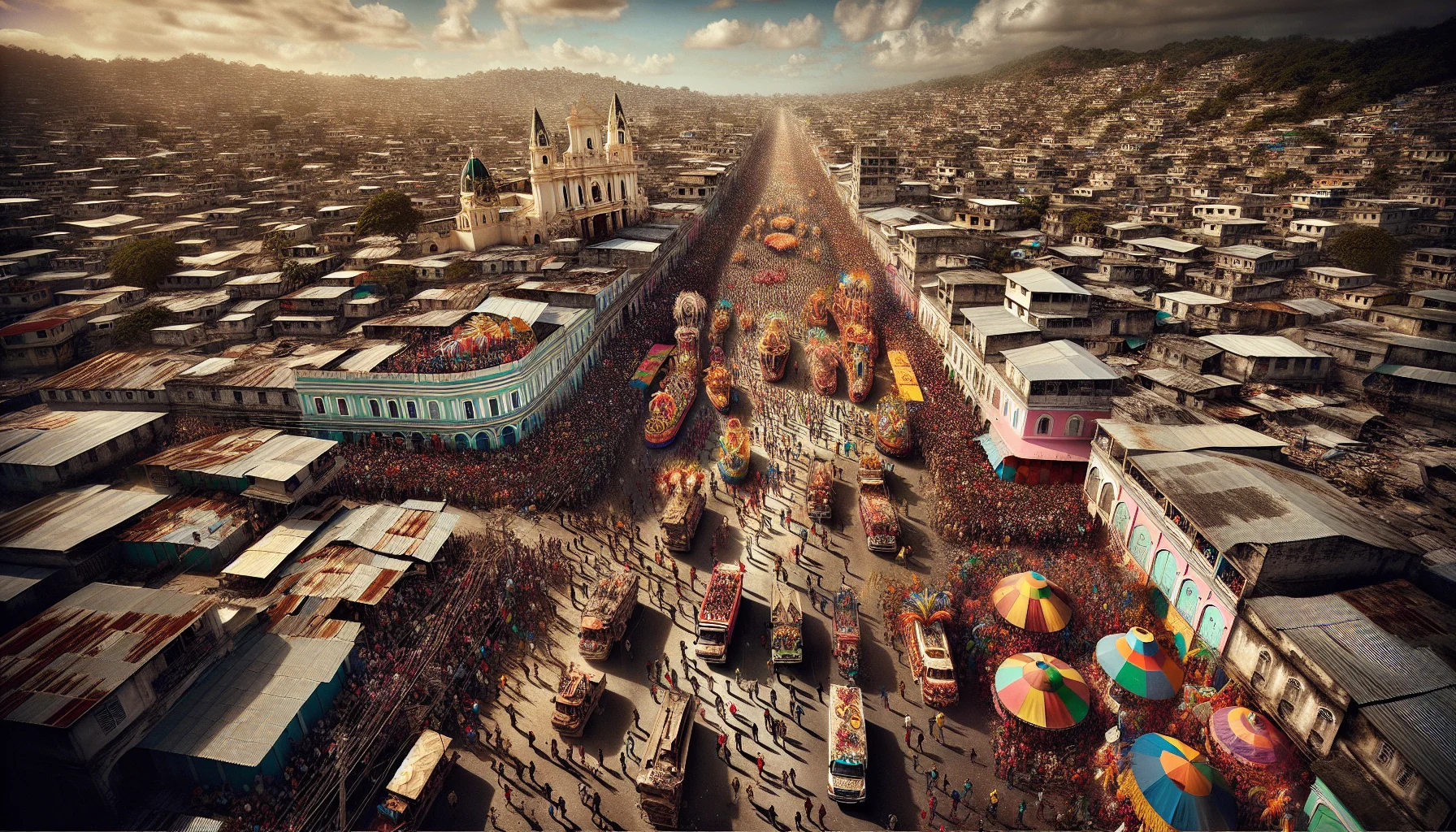
2015 Haiti Carnival Stampede
by: The Calamity Calendar Team
February 17, 2015
A Celebration Turned Tragic
Every year, the streets of Port-au-Prince, Haiti, spring to life with the vibrant sights and sounds of the annual carnival. The event is a cultural cornerstone, a joyous explosion of music, dance, and color heralding the days leading up to Ash Wednesday. In 2015, the anticipation was no different. The atmosphere in the city was electric, charged with the enthusiasm of the crowds and the rhythm of drums that pulsed through the air. Amid this excitement, however, an unexpected tragedy was lurking, ready to cast a shadow over the festivities.
Electricity in the Air—Literally
In the early hours of February 17, 2015, a bustling energy defined the carnival as throngs of locals and tourists joined the merriment. Standing as a centerpiece of the celebration was the carnival float carrying the popular Haitian band Barikad Crew. Known for energizing performances, the band was a crowd favorite, and their float slowly wound its way through the crowded streets, a beacon of the party's heartbeat.
As the celebration reached its crescendo, what happened next was a cruel twist of fate. A performer on the Barikad Crew’s float reached out, inadvertently striking an overhead power line with a pole. In an instant, sparks pierced the air, causing several performers on the float to be struck by an electrical discharge. Panic ensued, spreading through the dense crowd like wildfire, as onlookers witnessed the eerie dance of electricity against the night sky.
The Chaos of the Stampede
Thanks for subscribing!
The sudden shock quickly ignited fear. An instinctual need to flee overpowered logical thought, and in moments, the blaring music was drowned out by screams. Thousands who had flocked to enjoy the parade were suddenly in fight-or-flight mode, as the throng surged in chaotic directions. Such is the nature of panicked movement in large crowds, where the mass exodus can hardly be restrained or redirected.
As bodies collided and pushed, some individuals fell, unable to escape the crush around them. The stampede resulted in unspeakable tragedy. Eighteen people lost their lives that night—a grim toll paid swiftly and compounded by confusion. More than 78 others lay injured, needing immediate medical attention in the overwhelmed hospitals of Port-au-Prince.
In the Shadow of Tragedy
In the aftermath, the vibrant streets of the city fluctuated between poignant silence and the sound of distant sirens. Emergency responders worked tirelessly through the night, providing care to the injured and identifying the lost. The chaotic scene that had swept over the city revealed deep wounds not only on its populace but also on the spirit of a festivity usually dedicated to joy and celebration.
The immediate consequences were severe. Mardi Gras celebrations were suspended, replaced by grief and a haunting sense of loss. The news anchored Haiti in the global spotlight, with international sympathy directed towards the island nation, already familiar with adversity. But amid sorrow, efforts to recover and respond swiftly materialized.
Healing and Reflection
President Michel Martelly addressed the grieving nation, declaring three days of mourning and focusing efforts on supporting the victims' families. A relief fund was established to provide aid, reflecting the island's resilience and community spirit. The government also launched an inquiry into the event's circumstances, with an intent on understanding and preventing future disasters.
Despite the sorrow, this incident renewed calls for better safety measures at mass gatherings. Advocates pressed for improved event planning, scrutinizing everything from float construction to crowd control measures. The importance of flight and safety protocols, especially in dense and vital public gatherings, became an international discussion topic, underlining the need for vigilance even amid celebrations.
A Call for Safer Gatherings
The tragic events of the 2015 Haiti Carnival awakened many to the hazards inherent in large-scale celebrations. The echoes of that night continue to ripple through time, serving as a poignant reminder of the balance between joy and safety. Though no new revelations have altered the understanding of that day, the conversations and policy advocacies it sparked go far beyond Haiti, resonating in global circles focused on disaster preparedness.
In the years that followed, Port-au-Prince remains a city that cherishes its cultural heritage while steadily working towards improvements that safeguard its celebratory traditions against unforeseen tragedies. As each annual carnival approaches and colorful floats once again begin their march, the 2015 stampede stands as a solemn appendix in the annals of Haiti’s history—a testament to resilience in the face of tragedy.
Stay in the Loop!
Become a Calamity Insider and get exclusive Calamity Calendar updates delivered straight to your inbox.
Thanks! You're now subscribed.